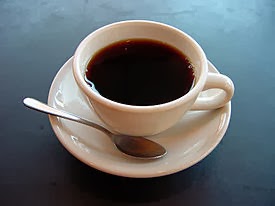|
|
| ASTM | The acronym for the American Society for Testing and Materials |
|
| Aromatics | Common name of hydrocarbon compounds whose molecules form a ring or rings, including BTX. The workd is derived from "aroma" meaning sweet smell |
|
| Benzene | Liquid reacting with ethylene to produce styrene monomer (SM) which is used for the production of polystyrene (PS) . It is used as a raw material for plastic peelets to obtain solid plastic products such as rulers and styrofoam. |
|
| btu | British Thermal Units, a universal measurement of quantity of heat energy required to raise the temperature of one pound of water by one degree Fahrenheit |
|
| Cogeneration | The simultaneous production of electricity and steam from a single process, which requires up to one-third less fuel than separate production. |
|
| Condendate | Light hydrocarbons that are gaseous subsurface, but condense into liquid similar to light crude oil at surface temperature and pressure |
|
| Cubic Foot | The most common unit of measure for gas volume. It is the amount of gas required to fill a volume of one cubic foot under stated conditions of temperature, pressure and water vapor |
|
| Development wells | Wells drilled to expoit the hydrocarbon accumulation defined by an appraisal well |
|
| Dry gas | Natural gas that contains typically lower amounts of hydrocarbons that can be liquefied, such as NGL, butane and propane |
|
| Environmental Impact Assessment | A process required of the governmental Agency (Office of Environmental Policy and Planning) by the Enhancement and Conservation of National Environmental Quality Act for major projects or legislative proposals significantly affecting the environment. A tool for it describes the positive and negative effects of the undertaking and cites alternative actions, scientific, technological and economic activity |
|
| Ethylene | Unsaturated hydrocarbon gas, produced from ethane used as base material for the production of polyethylene, vinylchloride and ethylene glycol |
|
| Fuel Oil | The heavy distillates from the oil refining process that are used primarily for heating industrial processes, for fueling locomotives and ships, and for fueling power generation. |
|
| Green Label | An environmental certification awarded to specific products that are shown to have minimum detrimental impact on the environment in comparison with other products serving the same function |
|
| Jet Fuel (JET A) | A quality kerosene product covered by ASTM Spec. D 1655. Used primarily as fuel for commercial turbojet and turboprop aircraft engines. A relatively low freezing point distillate of the kerosene type. |

